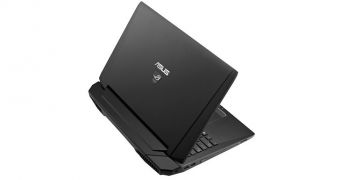ASUS ROG G750JZ was put to the test to determine whether its new embedded NVIDIA GPU would double its battery life while in gaming mode, as was claimed by the producing company.
A few days ago we told you that NVIDIA launched a new line-up of GPUs, the GeForce GTX 800M series, and one of the improvements promised to adopters of the technology was Battery Boost.
Immediately after NVIDIA rolled out the new GPUs, gaming solution providers rushed to announce new laptop products that had been updated to the latest standard. And they all promised an improved battery performance, while in gaming mode.
Battery Boost is a conglomerate of algorithms and driver management that optimizes the laptop’s hardware and the game being played for peak efficiency instead of peak performance.
NVIDIA also uses several systems to automatically manage how the GPU, CPU and memory work during frame rendering to save power during every frame.
And according to the GPU-maker, you could expect to see up to twice the battery life you’d normally have. But these are bold claims, which companies usually make when they are launching and promoting products and some of them don’t manage to hold in real life testing.
In order to see if NVIDIA’s claims were true, Laptop Mag put a laptop bundling the new GPU to the test to see what happened.
The results turned out to be surprisingly good, as the benchmarked laptop lasted 42% longer with Battery Boost being turned on.
The laptop used was an ASUS ROG G750JZ-XS7 that bundled NVIDIA GeForce GTX 880M GPU, which is one of the most powerful options form the NVIDIA line-up. The graphic chip is based on the older high-end Kepler architecture that has been overclocked to boost performance.
The Battery Boost feature can be turned ON/OFF from NVIDIA’s Geforce Experience utility and lets you adjust the slider to the desired maximum frame rate.
NVIDIA claims that Battery Boost is the most effective when used in concert with games that can run at 70-80 fps when the notebook is plugged in. So the test had the ASUS laptop run at 30 fps frame rate, while the screen had 50 percent brightness.
The game tested on the laptop was “World of Tanks,” which was played at a resolution of 1920 x 1080 with effects set low and medium volume.
Without Battery Boost, the laptop allowed for 1 hour and 32 minutes of play time. With Battery Boost on, the laptop managed to last for 2 hours and 11 minutes, a hefty 39 minutes extra (or 42%). That’s not bad and in accordance with NVIDIA’s original claims.

 14 DAY TRIAL //
14 DAY TRIAL //